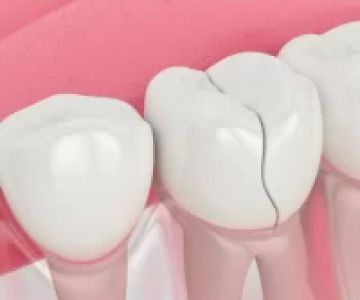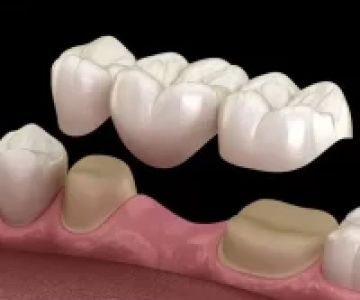Restorative Treatments for Cracked Teeth: A Guide to Repair and Relief
A cracked tooth can cause significant discomfort and affect your ability to eat, speak, and smile confidently. It’s a common dental issue that many individuals face, but the good news is that there are effective restorative treatments available. In this article, we will explore the various options for cracked teeth, how they work, and why seeking prompt treatment is essential for your oral health. Whether you're dealing with a minor chip or a deep crack, understanding your treatment options can help you make informed decisions and restore your smile.
1. Types of Cracks in Teeth
Not all cracks are the same, and understanding the type of crack you have can help determine the best treatment. Here are the common types of cracks in teeth:
- Hairline Cracks: Small, superficial cracks that are typically painless and do not require immediate treatment. However, they should be monitored by a dentist.
- Craze Lines: These are small cracks in the enamel, often cosmetic, that don’t typically cause pain but can be a sign of wear and tear.
- Fractured Cusp: A piece of the tooth breaks off, usually around the chewing surface. This type of crack may cause pain, especially when chewing.
- Split Teeth: A severe type of crack where the tooth splits into two distinct parts. This often requires a root canal and sometimes extraction.
- Vertical Root Fracture: Cracks that start at the root and travel upward, typically causing infection and severe pain.
2. Treatment Options for Cracked Teeth
The treatment for cracked teeth depends on the severity and location of the crack. Some cracks may require simple bonding, while others may need more complex treatments like crowns or root canals. Here are some common restorative treatments:
- Dental Bonding: For minor cracks or chips, dental bonding is often the first treatment option. The dentist applies a composite resin to fill the crack, restoring the tooth’s appearance and function.
- Crowns: If a crack is more severe and extends deeper into the tooth, a crown may be necessary. Crowns encase the entire tooth, providing strength and protection.
- Root Canal: In cases where the crack affects the tooth’s pulp, a root canal may be needed. This procedure removes the infected tissue and seals the tooth to prevent further damage.
- Tooth Extraction: For severely cracked teeth that cannot be repaired, extraction may be the only option. A dental implant or bridge can then be placed to restore the missing tooth.
3. Why You Should Treat Cracked Teeth Promptly
Delaying treatment for a cracked tooth can lead to several complications, including:
- Infection: A cracked tooth allows bacteria to enter the pulp, leading to infection and potential abscess formation.
- Increased Pain: As the crack worsens, the pain can intensify, especially when chewing or drinking hot or cold beverages.
- Tooth Loss: If untreated, cracks can deepen, leading to tooth loss and the need for more extensive procedures like extraction.
By seeking immediate treatment, you can avoid these complications and preserve the health and appearance of your teeth. Dentists use advanced techniques to assess the extent of the crack and recommend the most effective solution to restore your smile.
4. How to Choose the Right Treatment for a Cracked Tooth
Choosing the right treatment for a cracked tooth depends on several factors, including the severity of the crack, the location of the crack, and the health of the surrounding tooth structure. Your dentist will conduct a thorough examination, possibly including X-rays, to assess the crack and recommend the most appropriate treatment option. Some things to consider when choosing a treatment include:
- The Size of the Crack: Smaller cracks may require minimal intervention, while larger cracks may need more extensive restoration.
- The Tooth’s Function: For teeth that play a major role in chewing, such as molars, crowns or root canals may be necessary to restore full functionality.
- Your Personal Preference: Some patients may prefer to preserve their natural teeth as much as possible, while others may be open to more invasive treatments for long-term results.
5. Prevention Tips for Cracked Teeth
Preventing cracked teeth is always better than treating them. Here are some helpful tips to protect your teeth from cracks:
- Wear a Mouthguard: If you participate in contact sports or grind your teeth at night, wearing a mouthguard can help protect your teeth from injury.
- Avoid Hard Foods: Be cautious when eating hard foods, such as ice or hard candy, that can cause your teeth to crack.
- Regular Dental Checkups: Regular dental visits allow your dentist to catch any issues early before they turn into major problems.
Cracked teeth are a common issue that can cause significant discomfort, but with the right treatment, you can restore both the function and appearance of your smile. If you're experiencing a cracked tooth, don't wait – consult with your dentist for a comprehensive assessment and treatment plan.
For more information on restorative treatments and how they can help you maintain a healthy, beautiful smile, visit Dentistry Toothtruth.
SEO Title: Restorative Treatments for Cracked Teeth: Restore Your SmileSEO Keywords: restorative treatments for cracked teeth, cracked tooth treatment, dental bonding, tooth crown, root canal treatment, cracked tooth repair, how to treat a cracked toothSEO Description: Learn about the best restorative treatments for cracked teeth, including dental bonding, crowns, and root canals. Discover why early treatment is essential to protect your oral health and restore your smile.






 Orthodontic Associates of Collegeville, PC Adam J. Weiss DMD & Sarah S. Pavlow DMD5.0 (46 review)
Orthodontic Associates of Collegeville, PC Adam J. Weiss DMD & Sarah S. Pavlow DMD5.0 (46 review) Bergen-Rockland Dental Associates, LLC4.0 (59 review)
Bergen-Rockland Dental Associates, LLC4.0 (59 review) Renew Smiles Dental Implant Center – Surprise0.0 (0 review)
Renew Smiles Dental Implant Center – Surprise0.0 (0 review) Saluté Dental - Woodbury5.0 (1513 review)
Saluté Dental - Woodbury5.0 (1513 review) Sheats Endodontic Group4.0 (148 review)
Sheats Endodontic Group4.0 (148 review) Five Points Family Dentistry4.0 (567 review)
Five Points Family Dentistry4.0 (567 review) The Importance of Oral Health Education During Pregnancy for a Healthy Pregnancy
The Importance of Oral Health Education During Pregnancy for a Healthy Pregnancy Best Tips for Brushing Your Teeth Properly for Healthy Gums: Essential Techniques for Oral Health
Best Tips for Brushing Your Teeth Properly for Healthy Gums: Essential Techniques for Oral Health Why Skipping Dental Checkups Can Lead to Bigger Oral Health Problems
Why Skipping Dental Checkups Can Lead to Bigger Oral Health Problems Advantages of Porcelain Dental Restorations
Advantages of Porcelain Dental Restorations How Can Diabetes Cause Tooth and Gum Problems? Preventing and Managing Oral Health Issues
How Can Diabetes Cause Tooth and Gum Problems? Preventing and Managing Oral Health Issues Healthy Habits for Promoting Good Oral Health and Hygiene: Tips for a Healthy Smile
Healthy Habits for Promoting Good Oral Health and Hygiene: Tips for a Healthy Smile